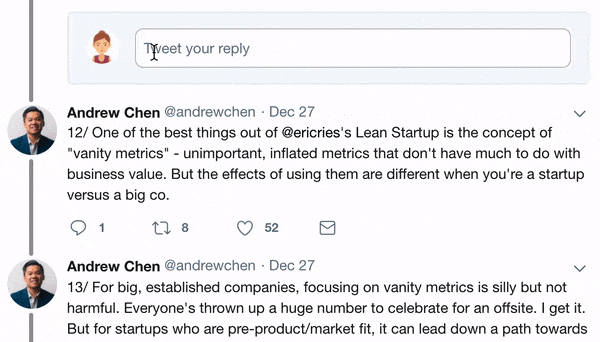
1/ New Fed report "The U.S. Dollar in the Age of Digital
Transformation" just released as a "first step" towards a Central Bank Digital Currency 🚨
TLDR: an American CBDC would replace privacy-protecting paper cash with a tool of surveillance and control
federalreserve.gov/publications/f…
Transformation" just released as a "first step" towards a Central Bank Digital Currency 🚨
TLDR: an American CBDC would replace privacy-protecting paper cash with a tool of surveillance and control
federalreserve.gov/publications/f…
2/ "This paper is the first step in a public discussion between the Federal Reserve and stakeholders about CBDCs... The introduction of a CBDC would represent a highly significant innovation in American money."
Indeed
Indeed
3/ "A CBDC would be the safest digital asset available to the general public, with no associated credit or liquidity risk"
The paper is written with the supreme confidence of an currency issuer that couldn't possibly falter
The paper is written with the supreme confidence of an currency issuer that couldn't possibly falter
4/ And yet:
A "potential benefit of a U.S.-issued CBDC could be to preserve the dominant international role of the U.S. dollar... The dollar’s international role benefits the U.S. by, among other things..."
A "potential benefit of a U.S.-issued CBDC could be to preserve the dominant international role of the U.S. dollar... The dollar’s international role benefits the U.S. by, among other things..."
5/ "lowering transaction and borrowing costs for U.S. households, businesses, and government.
The dollar’s international role allows the US to influence standards for the global monetary system."
Wow. The Fed straight up making the case that a CBDC could extend dollar hegemony
The dollar’s international role allows the US to influence standards for the global monetary system."
Wow. The Fed straight up making the case that a CBDC could extend dollar hegemony
6/ The Fed "could use a CBDC to collect taxes or make benefit payments directly to citizens.
Additionally, a CBDC could potentially be programmed to, for example, deliver payments at certain times"
Not said: a CBDC could blacklist individuals and put expiration dates on money
Additionally, a CBDC could potentially be programmed to, for example, deliver payments at certain times"
Not said: a CBDC could blacklist individuals and put expiration dates on money
7/ "Any CBDC would need to strike an appropriate balance between safeguarding the privacy rights of consumers and affording the transparency necessary to deter criminal activity"
In other words, there will be no privacy from the government's eyes in an American CBDC
In other words, there will be no privacy from the government's eyes in an American CBDC
8/ "A CBDC intermediary would need to verify the identity of a person accessing CBDC"
So, banks or companies that distribute CBDC on behalf of the Fed would need to KYC users.
The system would be, by its very nature, exclusionary
So, banks or companies that distribute CBDC on behalf of the Fed would need to KYC users.
The system would be, by its very nature, exclusionary
9/ As an aside, it is fascinating that the Fed claims that "banks currently rely (in large part) on deposits to fund their loans" when we are constantly being told that this is not the case.
You have to wonder why they say this?
You have to wonder why they say this?
10/ The Fed doesn't list surveillance or programmable confiscation or social engineering as CBDC downsides, but they do list two major ones:
That an interest-bearing CBDC could reduce demand for MMMFs and Treasuries...
That an interest-bearing CBDC could reduce demand for MMMFs and Treasuries...
11/ And could lead to bank runs as citizens rush to convert commercial bank money or other monetary instruments to the "risk-free" CBDC during a panic.
That the Fed says in the paper that the system would work through third party dealers is perhaps a way of calming this fear
That the Fed says in the paper that the system would work through third party dealers is perhaps a way of calming this fear
12/ The paper hints that the Fed could "limit the total amount of CBDC an end user could hold, or it could limit the amount of CBDC an end user could accumulate over short periods"
In other words, you won't have nearly as much freedom as you have with cash with CBDC
In other words, you won't have nearly as much freedom as you have with cash with CBDC
13/ The Fed "might have to increase the size of its balance sheet to accommodate CBDC growth"
And to defend against demand surges that could "put upward pressure on the federal funds rate... the Federal Reserve might need to substantially expand its holdings of securities"
Wow
And to defend against demand surges that could "put upward pressure on the federal funds rate... the Federal Reserve might need to substantially expand its holdings of securities"
Wow
14/ In short, the Fed is laying the case for the end of privacy in public money, and the introduction of a programmable tool which empowers the state at the expense of the private sector, and serves as an excuse for increased inflation.
Thank god for Bitcoin.
Thank god for Bitcoin.
• • •
Missing some Tweet in this thread? You can try to
force a refresh



